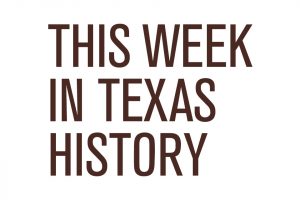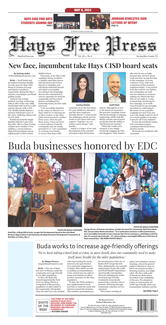Quanah Parker, the last Comanche chief, was buried beside his famous white mother on Feb. 25, 1911.
A few days after surrendering at Fort Sill in the spring of 1875, the battle-scarred leader of the Quahada Comanches just happened to tell Col. Ranald S. Mackenzie that his mother was the former white captive Cynthia Ann Parker. It fell to his longtime pursuer to inform Quanah that the woman, who had given him birth, was dead.
Mackenzie either did not know or did not care that the Comanches never had been a united tribe under one leader before he appointed Quanah chief. Comanche critics blamed the controversial decision on the Quahada’s white blood, which made him popular among the soldiers, frontiersmen, politicians and white people generally.
Herman Lehmann was ten years old, the same age as Cynthia Ann, when Apaches snatched him in 1870. Years later in his autobiography, he related Quanah’s dogged effort to talk his small band of holdouts into giving up.
“Quanah told us it was useless for us to fight longer, for the white people would kill all of us if we kept on fighting, but that if we went on the reservation the Great White Father in Washington would feed us, and give us horses, and we would in time become like the white men, with lots of good horses and cattle and pretty things to wear.”
Billy Dixon, immortalized for the long-range shot that ended Adobe Walls Part II, recalled meeting Quanah on an outing with the army. “As we were riding along one day, he began talking about the fight at the Walls. When I told him that I was one of the men that had fought against him, he leaned over his horse and shook my hand. We became good friends.”
Even though Quanah would not convert to Christianity, he had deep respect for the Mennonite missionaries who ministered to the Comanches. One of them, a Mrs. Becker, wrote after decades among the Indians, “They were very gentle people. They gave us a foresight to education, morals, ideals. They are still an influence in our lives.”
Due to his unique status and charismatic personality, Quanah became a celebrity whose company was sought by the high and mighty. Ranchers like Charles Goodnight, Burk Burnett and the Waggoners gave him gifts and advice on raising livestock. The shrewd chief made a fortune in the cattle business and by the end of the nineteenth century was without a doubt the wealthiest Native American alive.
Burnett went his contemporaries one better by building a 12-room house for Quanah and his six or seven wives. Polygamy, peyote and long hair were three customs the Comanche would not abandon just to satisfy appalled whites.
While his fellow Comanches were rarely allowed to set foot off the reservation, Quanah was free to travel and often did so. He was a frequent visitor to Washington, D.C., where he lobbied Congress on behalf of his tribe, as well as Fort Worth, Dallas and other Texas towns.
Quanah’s first visit to Cow Town in 1885 proved fatal for his traveling companion. Returning to the hotel room the two Indians shared, Chief Yellow Bear “turned out the gas lights and then turned the gas back on again immediately and was asphyxiated.”
Quanah would have suffered the same fate had he not rolled off the bed during the night and landed on the floor six inches from the crack under the door. There was just enough fresh air to keep him alive until morning.
Quanah rode in Teddy Roosevelt’s second inaugural parade in January 1904. The imposing horseman in full Comanche attire was the center of attention, although some spectators took exception to his presence. A retired army captain, once outsmarted by Quanah, felt there was no place in the procession for “good Indians” who had “dipped their hands in many white settlers’ blood.”
Three months later, the chief returned the favor by joining Burnett and other ranchers in treating the president to a wolf hunt. Quanah had Roosevelt over for dinner at the Star House, his private residence, where his wives served as a well-trained wait staff.
The Dallas Morning News published this front-page description of Quanah at the State Fair in October 1910: “The chief is a striking figure. He was attired in ordinary street costume and a soft black hat, his braided locks, tied in two plaits down his back, his erect bearing, his seamed and wrinkled countenance immediately disclosed to most observers his identity.”
That December Quanah brought his mother’s remains from Texas to the reservation. At the reburial, he said, “Forty years ago my mother died. She captured by Comanches, nine years old. Love Indian and wild life so well no want to go back to white folks.”
Two months later following a short and undisclosed illness, Quanah Parker joined Cynthia Ann. His epitaph reads: “Resting here until day breaks and shadows fall and darkness disappears.”
Bartee welcomes your comments and questions at barteehaile@gmail.com or P.O. Box 152, Friendswood, TX 77549 and invites you to visit his web site at barteehaile.com.






